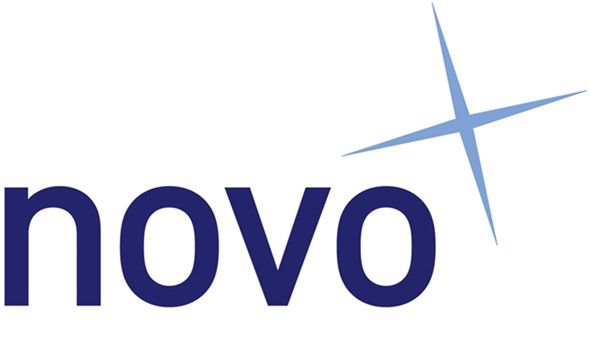Executive Retention: Getting Your Best To Stay

Retaining executive talent has become a critical challenge for leadership, thanks to the increasingly competitive business world. Gone are the days when people were willing to tolerate jobs that left them unhappy and stressed. Talent is demanding more than ever from employers, and companies struggle to get them to stay. The problem doesn’t disappear at the higher levels; we’re seeing a marked increase in executive turnover. A recent Deloitte study found that 70% of executives are considering quitting their jobs for one that better supports their well-being. CEO retention is also dropping- May 2023 saw the highest CEO turnover rate in decades.
As companies grapple with the consequences of losing key leaders, implementing effective executive retention strategies has never been more pressing.
What is a good retention rate?
Before we dive further, let’s see what a good executive retention rate is. Executive retention rate signifies the number of executives who chose to remain with your company for a specific period, usually one year. A general guideline for a healthy retention rate is 90%, which translates to a turnover rate of about 10%. A high retention rate indicates that your company has a thriving work environment that aligns with your employees’ aspirations and expectations. It also shows that your employer branding and recruitment strategies align with the realities of your workplace. However, the 90% figure isn’t set in stone. It’s a bit of a moving target, shifting with industry trends and your company’s unique circumstances. Companies with high competition for executive talent or those experiencing rapid changes may have lower rates. The average industry retention also varies, so benchmarking against the industry is a good idea. For example, financial services have the highest average employee retention rate of 71%. In contrast, at the other end of the spectrum, the leisure and hospitality industries have a comparatively low retention rate of 18%.
What is a low retention rate?
When discussing a low retention rate, we refer to a figure lower than the industry average. Let’s say the average retention rate in your industry is at 60%, and yours is inching to 50% -that’s when alarm bells should start ringing. A low retention rate signals potential issues in your company.
The Surge in Executive Turnover
It’s no secret that C-Suite turnover is hitting companies worldwide. Two months ago, a string of decade-long executives left their jobs at Google, including finance chief Ruth Porat, YouTube CEO Susan Wojcicki and Chief Business Officer Robert Kyncl. Infact, CEO turnover doubled in 2022, in the US and UK.
Part of the reason was delayed retirements- companies kept on the old guard during the pandemic to keep things afloat. Boards didn’t want to deal with the uncertainties of succession with a global pandemic, supply chain crises and civil unrest. After the pandemic, leaders felt they had done their duty, and the trend began to reverse; there were increased levels of new CEO appointments in the following years.
However, it’s difficult to say how much turnover is driven by other factors than delayed retirements. Do boards finally feel enough certainty to change their leadership team? Or are leaders not so sure they want to continue their roles?
Either way, businesses know that losing a leader is catastrophic; it feels like losing a piece of the company. Leaders make strong ties and relationships in every department to get work done. When they leave, company performance can take a hit. It’s worse when their exit dominos into the resignation of other senior staff who may have been good candidates for the vacant role. Not to mention the mammoth task of recruiting, onboarding and getting used to new talent that is left in their wake.
Read More About Executive Turnover
Strategies for Retaining Your Top Executives
Keeping the above in mind, companies need to re-evaluate their executive retention strategies. High-level employees think and work differently than low and mid-level staff. Therefore, deeply understanding your top talents’ needs and aspirations and offering relevant benefits is critical. A one-size-fits-all-execs approach doesn’t work either- perks have to be individually tailored.
Benefits that Truly Matter
Research says that most executives value work-life balance, well-being, and professional growth beyond traditional perks. A recent Deloitte study found that 81% of C-suite say improving their well-being is more important than furthering their career, compared to only 68% of employees. Therefore, investing in wellness programs, mental health and fitness initiatives can increase engagement and commitment. However the path to well-being isn’t easy. 74% of executives say they’re facing obstacles in achieving their wellbeing goals. A heavy workload and a stressful job are the main culprits. You can’t exactly remove the stress from a high-level position, but you can force your executives to take time off. Encouraging sabbaticals and mandatory vacations, incorporating elements of leisure into business travel (bleisure) and giving access to exclusive private clubs can reduce burnout.
Lastly, money and perks may not be the biggest drivers at the higher level. At that level, many look for impact, influence and positive change. See if the company has detracted from its mission or values -the reason why many execs join the company in the first place. Make it known that leaders are welcome to take charge and make the changes they wish to see.
Read More About Strategies For Retaining Your Top Executives
Designing Effective Retention Agreements
Sometimes offering benefits isn’t enough -forming retention agreements becomes necessary. Executive retention agreements are legal contracts between an organization and its executives that provide benefits to high-level employees in exchange for continued employment. They are a proactive approach to retaining top executives. Financial incentives such as performance-based bonuses, salary raises, stock options and equity ownership are key in retention agreements, but they’re not the only benefits. Well-formed retention agreements cover job security, enhanced benefits (vacation days, health & wellness benefits), flexible work arrangements, professional development opportunities and legal protections. Usually, they’re implemented during critical periods such as mergers and acquisitions to retain key talent.
Occasions when executive retention agreements become vital
- Mergers & Acquisition: The leadership made the company an attractive acquisition, so retaining them is a priority.
- Succession Planning: Ensuring a smooth transition during leadership changes by getting other senior staff to stay.
- Growth Periods: Retaining talent is essential to capitalise on opportunities
Before offering retention agreements, it’s crucial to understand how they work and the financial ramifications they will have for your company. Secondly, detail the agreements to each executive based on their roles, responsibilities, and contributions. Lastly, be transparent about the details -you need these people, so be upfront with them. The goal is to find a middle ground to benefit both sides. The company gains stability while executives feel fairly compensated for their contributions.
Read More About Executive Retention Agreements
Leveraging Executive Retention Bonuses
Executive retention bonuses or packages are financial incentives included in a company’s overall retention strategy. Often performance-based or commitment-length-based, they go beyond an executive’s traditional salary to incentivise them to stay. They are often decided as a percentage (10-20%) of the salary. Companies may pay the bonus in one lump sum or instalments. The package may involve additional financial benefits such fixed or variable equity, stock options or other considerations important to the executive.
Current research suggests retention bonuses are successful in the short run and get employees to stick for a certain time during a competitive talent market. Employees like to be appreciated for their efforts monetarily. However, retention bonuses don’t increase engagement or loyalty. Retention bonuses move the employer/employee relationship away from the ideal partnership state and towards the transactional.
The effectiveness of such bonuses in the long run depends on the reason for turnover risk. For example, if the executive is leaving because they want better work-life balance or better alignment with their values, will retention payments help? Executive retention bonuses work best when integrated into a comprehensive retention strategy, including benefits, development opportunities and a positive work culture.
Read More About Leveraging Executive Retention Bonuses
Targeted Coaching For Retention
Executive coaching is a partnership between an executive and a coach, intending to enhance leadership skills, overcome challenges, and achieving personal and professional objectives.
The coaching is personalised to each leader’s goals and areas of improvement. Many areas may be covered, such as leadership, conflict resolution, setting goals and managing work-related pressure.
Multiple studies have proved executive coaching to be a powerful tool for executive retention. Executive coaching during organizational change has been found to increase goal attainment, enhance solution-focused thinking, and increase ability to deal with change, leadership self-efficacy and resilience.
Many executives are also seeking coach training, to gain skills in coaching their teams and fostering a coaching culture in their organisation. Coaching culture boosts retention by increasing loyalty. It demonstrates that you’re committed to investing in your team. It also fosters open communication, trust and collaboration, creating a work environment your team will value.
Read More About Targeted Coaching For Retention
Retaining CEOs
CEO retention works differently than the rest of the leadership team -forced departures have always been a primary reason for CEO turnover. Forced departures can be for any reason, including ethical misconduct, poor financial performance, or conflicts with the board or activist investors. However, 2023 is seeing CEOs voluntarily leaving their posts. Over 1,400 CEOs have stepped down between January to September this year -almost a 50% rise from the 969 departures over the same period last year. A chunk of the exits (22%) were delayed post-pandemic retirements, while no reason was given for 33% of the exits.
Securing the continuity of CEOs and planning their succession is crucial, given their central role in shaping an organization’s direction. While retaining CEOs poses unique challenges, it is essential to acknowledge that CEO change carries more downside risk than upside potential. The expenses of replacing an employee typically range from 0.5 to 2 times their annual salary. The cost of losing a CEO can be exceedingly steep for companies, surpassing $1.8 million, as indicated by a recent study. This encompasses ‘hard costs’ of hiring and ‘soft costs’ such as a decline in morale and competitors capitalizing on the disruption in competitive momentum.
Recent research indicates a positive correlation between CEO approval ratings and retention. Consequently, cultivating a positive leadership culture and actively working toward employee satisfaction can significantly diminish the likelihood of CEO turnover. Along these lines, it’s critical to cultivate strengthened and positive relationships with the board. Offering continuous professional development opportunities and investing in CEO coaching demonstrates your company’s commitment to the CEO’s personal growth, significantly reducing turnover rates.
Read More About Retaining CEO’s
Summing It Up
The ability to retain and nurture top talent is key for organizational success. By addressing the root causes of executive turnover and fostering a supporting culture, companies can retain top talent and position themselves as employers of choice in the competitive recruitment market. Lastly, executive retention is an ongoing process. Remember to take regular assessments and adjustments to ensure sustained success in keeping your best talent on board.
References:
https://www2.deloitte.com/us/en/insights/topics/leadership/employee-wellness-in-the-corporate-workplace.html
https://www.award.co/blog/employee-turnover-rates
https://www.cnbc.com/2023/08/21/googles-old-guard-shifts-roles-as-the-company-searches-for-itself.html
https://www.kornferry.com/insights/featured-topics/leadership/uk-retail-the-c-suite-door-revolves-again
https://hbr.org/2023/02/do-retention-bonuses-pay-off#:~:text=When%20used%20surgically%2C%20retention%20bonuses,build%20with%20their%20team%20members.
https://www.challengergray.com/blog/ceo-exits-continue-record-clip-164-ceos-leave-their-posts-in-september-2023-q3-highest-quarterly-total-on-record/
https://www.stantonchase.com/insights/white-papers/the-quiet-and-expensive-cost-of-poor-c-suite-retention
https://www.washington.edu/news/2023/06/13/employee-approval-can-make-or-break-ceos-uw-research-shows/












